How Colleges Help Visually Impaired Students Succeed
Obtaining a college education is no easy task, but for students with visual disabilities, the path to completing a degree program is lined with unique challenges and barriers. The following guide explores how vision loss and blindness impact the educational experience, what colleges are doing for visually disabled students, and includes numerous resources, as well insight and tips from experts and a list of scholarships and grants.
Expert Sources & Partners

CHRIS DANIELSON
Director of Public Relations,National Federation of the Blind

MARCUS MADSEN
Senior Disability Services Advisor,Capella University
Blind or low vision students face unique challenges and barriers when it comes to higher education. This, however, does not mean that earning a degree is impossible. Several organizations and schools are dedicated to making college education accessible to students with visual disabilities, and today's technology now offers a wide range of tools and devices for successful learning. Support can be as simple as making web content font larger and clearer to providing devices that address an individual student's needs. AC Online is also dedicated to ensuring our content is accessible to all readers and created this guide to help blind and low vision students succeed in the classroom and beyond.
At AC Online, we do our best to continually improve our sites so that all our content is accessible to students with visual disabilities. Here's a quick look at what we've done to make our site web accessible:
- Color contrast: Draws your eyes to the most important places
- Clear readability: Consistent font types are used over simple backgrounds
- Visibility: Action buttons are organized and made highly visible to ensure you don't miss important information
- All our content is screen reader accessible
WHAT ELSE DO WE PLAN TO DO?
- Screen magnifiers
- High contrast (for day time and night time use)
- Quick-link to skip navigation tabs to content
- Eliminate screen reader limitations by correctly labeling images, having a clear layout, and correcting any Java code that may not be compatible with assistive software
- Ensure key board accessibility for navigation
Visual Disabilities at a Glance
Because of its broad and varied nature, vision loss refers to individuals who are completely blind as well as those who have problems seeing–even when wearing corrective lenses. At the educational level, vision loss is classified into three major categories, which are based on an individual's functional limitations and how those limitations impact his or her ability to perform daily activities.
BLIND / LOW VISION
Clinically defined as an individual with visual acuity of 20/70 or worse – with correction. Additional factors that impact visual disabilities include light sensitivity, glare sensitivity, contrast sensitivity, and light/dark adaptation.
LEGALLY BLIND
On charts that use Snellen methodology, a clinical diagnosis of a central visual acuity of 20/200 or less in the best eye with correction or a visual field of 20 degrees or less. On newer charts, such as the Bailey-Lovie or the Early Treatment Diabetic Retinopathy Study (ETDRS), if a person cannot read any of the letters on the 20/100 line, he or she is considered legally blind.
TOTAL BLINDNESS
Typically refers to an individual with an inability to see with either eye or a visual acuity of 20/400 or worse (visual field of less than 10 degrees).
Technology for Students with Visual Disabilities
Online learning has long been regarded as an avenue to provide greater access to higher education. However, for blind students or those with vision loss, online learning can actually create obstacles–especially as technology and learning materials become more advanced. By the time a student with a visual disability has reached college, they are typically familiar with the various types of assistive technologies and techniques used to navigate their classes and materials.
Assistive technology can give students who are blind or have low vision support in all academic areas. The selection of devices and software is contingent upon a variety of factors and students may need to utilize multiple pieces of technology throughout their program of study.
Below is a list of common assistive technology used in higher education.
BRAILLE DISPLAYS
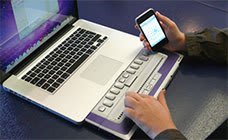
This device displays information on a computer screen by raising and lower combinations of braille pins. It typically sits underneath the user's keyboard and refreshes in real time as the user moves the cursor on the screen.
BRAILLE PRINTERS
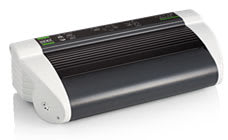
Also known as “braille embossers,” these printers translate print text in Braille format onto specialized paper.
BRAILLE TRANSLATOR

These devices convert information from a document and translates it into a Braille file. That information can then be read on a Braille display, a personal assistant device, or sent to a Braille embosser.
PERSONAL DATA ASSISTANT
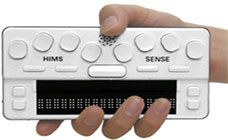
Also known as “Braille notetakers,” personal data assistants are small, portable devices that can be used with Braille or typewriter keywords. Current versions include word processing, calendars, Web browsing, and other helpful features.
SCREEN READERS
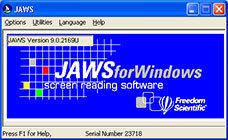
Screen Readers are software programs that interface with the computer's operating system and provides the user full control over reading and interacting with their computer (e.g. using a navigation menu, highlighting text, using a spell checker, etc.). Jobs Access with Speech (JAWS) is arguably the most widely used screen-reading program. It can help students use everything from Microsoft Office to email, Google Chrome to a computer calculator.
SCREEN MAGNIFICATION

Screen Magnification Systems allow the user to enlarge the graphic, media, and text on a computer screen. Similar to a magnifying glass, the user can control what gets magnified (e.g. text cursor, mouse pointer, icons, title bars, etc.). ZoomText is an example of a screen-reading and magnification program that provides students with access to visual and auditory translation for what's appearing on their computer screen.
VIDEO MAGNIFIERS/CCTV
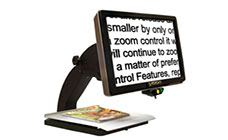
Also known as a closed-circuit television system, video magnifiers use stand-alone cameras to project magnified images onto a television screen, computer monitor, or video monitor.
LARGE-PRINT KEYBOARDS

Large-Print Keyboards are keyboards with larger keys and color displays that are easier to see.
TEXT-TO-SPEECH SOFTWARE
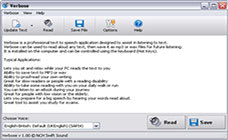
Text-to-speech software turns electronic text into audible speech for low vision or blind users.
Reading Up on Tech
- A
Accessible AndroidThis blog offers various articles and tutorials on eyes-free Android devices.
AccessWorld Magazine
This online publication—offered by the American Foundation for the Blind—is dedicated to featuring the latest technology news for individuals who are blind or have experienced vision loss.
Apple Accessibility
Apple strives to make its products simple and easy to use for everyone. Learn more about what Apple's technology features for the blind and those with low vision, including the world's first gesture-based screen reader.
AppleVis
Led and managed by a team of volunteers, this community-based website provides podcasts, guides and tutorials, and accessory reviews for Apple users with visual disabilities. The organization strives to develop strong relationships with app developers and raise awareness to actively promote accessibility.
Assistive Technology
A resource for technology specifically for those with learning disabilities, including blindness and low vision. - B
Braille MonitorOffered by the National Federation of the Blind, this publication promotes a positive philosophy about blindness. Readers can find content on advocacy, employment, education, technology, and more. - G
Google AccessibilityLearn more about Google's accessibility features. The site also offers information on how companies can implement accessibility tools and practices. - I
International Braille and Technology Center for the Blind (IBTC)
The largest blindness technology center in the US, IBTC offers various services, training, and advice to help blind and low vision individuals manage daily tasks and address specific technology problems and concerns. Employers and parents can also receive helpful information. - N
National Braille Press
The National Braille Press promotes braille literacy through outreach programs and by providing access to information that empowers the blind to effectively connect with work, family, and the surrounding community.
NFB-Newsline
The National Federation of the Blind's offers this free service for anyone who cannot read regular newsprint. Subscribers have access to more than 300 newspapers and magazines through touch-tone phone, the Internet, or downloadable digital talking-book or MP3. - P
Perkins Scout
This searchable online database is home to carefully evaluated resources on blindness and low vision. Users can search for a range of topics, from general info to guidance for family members to resources for educators and employers. All content and information has been reviewed by Perkins experts and the site is maintained by the Perkins School for the Blind's Training and Educational Resources Program. - S
Society for the Blind
This nonprofit organization provides various services, including classes, events, and programs for the young and old, for those who are blind or have low vision. Society for the Blind serves 26 counties in Northern California. - T
TechVision
Founded by Denise Robinson, TVI, Ph.D., TechVision aims to help blind or visually disabled people with reading. Through easy-to-follow lessons, individuals of all ages can gain key technological skills and knowledge that will help them succeed in their professional and personal lives.
Tech You Can Use
- C
Choosing a Screen Reader
The American Foundation for the Blind offers a product overview of some of the best screen readers currently available for students with visual disabilities. Find out more about specific products and brands and also important questions to ask before making a purchase. - J
JAWS
Short for Job Access With Speech, JAWS provides both speech and Braille output for most computer applications and is the world's most popular screen reader. It has numerous features including talking installation, Skim Reading to save time, built-in DAISY player, Research It for fast searching, and more. - K
Kurzweil 1000
The Kurzweil 1000 is an award-winning scan and read software for anyone with visual disabilities. With the software, users can accurately scan everything from documents to books to mail and even food boxes. Software reads all text aloud in a variety of voices. Users also have the ability to write and edit their own documents and simple forms. - N
NaturalReader
NaturalReader is a free, easy-to-use text-to-speech software that converts a range of texts into verbal words. Users can get more enhanced features such as more multiple options for voices, ability to convert mp3s, or MS Office add-ins for a cost. - S
SuperNova Screen Reader
The SuperNova screen reader can be used at home, work, and school. Key features include intelligent screen reading to control what is read aloud, natural sounding voices, robust Braille output, and Dolphin Cursor for individuals who cannot see the screen or have difficulties using a mouse. - W
Window-Eyes
Window-Eyes converts the Windows operating system into speech for total access to Windows-based computer systems. Created by GW Micro, this screen reader offers a wide variety of features and flexibility for highly customizable use, allowing users to be in complete control over what they hear and how they hear it.
Colleges and Blind or Low Vision Students
Technology has significantly changed the world of higher education. In fact, the entire postsecondary process is now being delivered via online services, from application to admissions, registration to financial aid, and instruction to communication. It is important to keep in mind, however, that students with visual disabilities have unique learning needs so finding a college that offers and uses accessible technology is crucial.
Under the Americans with Disabilities Act and Section 504 of the Rehabilitation Act, colleges are required to ensure their programs are accessible as a whole, which means going beyond just making buildings accessible–online learning environments and materials must also be usable by individuals with various disabilities. During the past five to ten years, accessibility has become a concern across colleges throughout the country, including large schools such as Harvard University, UC Berkeley, and MIT, to name a few.
As a result, many colleges and universities have started to make program and policy changes. Below are some examples of what colleges across the nation are doing:

Accessibility and compliance teams. Many colleges have launched dedicated teams to ensure their school and course materials are accessible to all and that policies and procedures remain compliant with the ADA.

Proper faculty and staff training. In order to enforce accessibility policies, colleges and universities are requiring that faculty and staff receive proper training. This ensures that those on campus understand all policies and are trained on how to properly use–and utilize–accessibility technology, as well as handle any technical issues that students with visual disabilities may have.

Enhance the online learning environment. This includes carefully reviewing processes for online course creation, materials, and course management systems to ensure that everything is compatible with basic assistive technology or can easily be altered to a more accessible format.

More assistive technology. Many schools are increasing their use of assistive technology by having dedicated workstations for students with visual disabilities or by providing more tools such as screen readers, screen magnification systems, or text-to-speech software. Some colleges are also using alternative media services so that textbooks and course readers can be converted into accessible formats much faster than before.
Tips for Effective and Successful College Learning
Assistive tools and technology can be a huge help, but they can only take a student so far. To make the most of one's education, students with visual disabilities need to be proactive throughout their entire college experience. Below are a few strategies to help students succeed.
- Find a college with quality resources and support services specifically for blindness, low vision or vision los.
Like all other students, choosing the right college is crucial. Whether you're taking one class or working towards a four-year degree, attending a college that offers the courses, programs, and additional resources to help you meet your goals is necessary. In addition to evaluating course offerings and professors, students with visual disabilities should also do their research and find out what type of support services are available. Is there a dedicated Disability Resource Center on campus? Will you be able to easily convert course materials into an accessible format? Is braille used on campus so you can identify classrooms, buildings, and other important structures? Does the school offer any assistive devices? Are faculty well-trained and knowledgeable in addressing the unique needs of blind and low vision students? What platforms are used and are they compatible with the software and tools you use (e.g. JAWS)? - Be your own advocate.
You know yourself and your needs better than anyone else does. Colleges and professors will do their best to create a supportive environment, but if you aren't getting what you need—whether that's one-on-one tutoring, access to reading materials, or a software upgrade for a particular device—it's important that you speak up and ask for help. For instance, most colleges won't provide a human note taker for blind or low vision students. If you're enrolled in a class that uses a lot of visuals on a board, you may need to request a certified note taker to help you see and understand everything that's going on. - Use available assistive resources and services.
Remember that one of the reasons you chose to attend a particular school is because it offered resources and services that would help you throughout your college experience. Once you're on campus, be sure to actually use those services. Don't hesitate to meet with a resource counselor to learn more about what's available and to find out how to use those resources effectively. It's also a good idea to speak with individual professors at the start of each quarter or semester to see if any lesson plans might require you to sit closer or use specific assistive devices. - Bring all necessary assistive technology to class.
Each day, come to class prepared. That means bringing any and all devices (Braille notetakers, screen readers, or magnification systems, etc.) and notes that will help you with that day's lecture. If there's a visual presentation, ask your professor for guidance on what devices or tools might help you see everything better. Also keep in mind that preparing can take time. For example, if you have a quiz that day and need to study, it could take some time to set up everything you need to even begin studying notes, textbooks, and other materials. Plan ahead and set aside ample time. - Participate in campus and community events.
Research has shown that some students with visual disabilities will purposefully isolate themselves from other students. In some cases, this isolation might even be necessary, for example, in a computer lab when using a workstation specifically for blind students. While some things may be better done alone, but it's still important to find a community and feel at home when you're in college. Make sure to reach out to others, attend campus events, or consider joining an academic fraternity or sorority to find fulfillment and camaraderie outside of the classroom. All students need a little break every now and then.
Services for Students with Visual Disabilities
Students with visual disabilities may choose online learning for the same reasons as those without disabilities. However, like campus-based settings, online learning environments may also require slightly altered accommodations. Because every student's vision may be affected to different degrees, most online colleges determine accommodations on a case-by-case basis. Accommodations may be made at both the individual student and assignment level. Common accommodations provided by universities include the following:
- Additional time to complete coursework or tests
- Modification of individual course instruction or materials
- Tape recording of class lectures
- Providing assistive technology (e.g. listening devices, computer-aided transcription)
- Notetakers and readers
In addition to providing individualized assistance, major shifts in policy have been occurring in light of accessibility lawsuits during the past seven to eight years. Below is a list of four ways that universities and colleges support students with visual disabilities, including those in online learning environments.
- Universal Design
Universal design means instruction–in all mediums–allows all students, regardless of disability, full access to content and class participation activities. Some institutions, such as St. Joseph's University, have launched universal design guidelines and review each online course to ensure it meets quality standards. For example, St. Joseph's strives to ensure each course uses accessible technologies and provides student access to accommodations; contains auditory and visual content alternatives; is open to assistive technologies; and fosters content readability. - Disability Resource Centers (DRCs)
Many online and traditional universities have a disability resource center that handles a wide range of accommodation requests. For example, Ohio State University has an Office of Student Life Disability Services. - Assistive Technology Centers
Because assistive technology makes it possible for students with visual disabilities to attend school, having access to and support for that technology is crucial. Some colleges have either standalone assistive technology centers or offer services through their disability offices. Through these centers, students can check out or rent hardware devices and assistive software. Additionally, some universities may also offer personalized training via an assistive technology specialist. - Printed Material Conversion
Students at both campus-based and online colleges may request that learning materials be converted into large print, electronic, or Braille format.
INTERVIEW
with Marcus Madsen,Senior Disability Services Advisor at Capella University
Marcus Madsen and his team works to provide equal access to learners with disabilities while maintaining the integrity of the University's academic standards. They accomplish this mission by engaging with learners to determine reasonable accommodations and by working across the university to ensure an accessible learning environment.
What are the biggest hurdles or challenges students who are blind or experience vision loss face in college, particularly in online learning environments?
The online environment brings a unique set of challenges as technology evolves rapidly in the online classroom. Much like the ever-evolving online classroom, each learner is unique. As a result, even in courses that may be accessible to many learners with certain forms of vision loss, other learners may require unique accommodations to suit their specific needs. The challenge shared by universities and learners with vision loss is crafting reasonable accommodations for such students to ensure access, but still maintain the academic integrity of the course experience.
What is Capella doing to make their online programs more accessible to students with visual disabilities? What are the major challenges the university faces in doing so?
My team has encouraged our e-book vendor to provide all their content in accessible formats, and our vendor has obliged, moving to a fully accessible platform for e-book delivery. We have also created a streamlined and efficient process to work with publishers so we can provide accessible electronic versions of hard copy textbooks.
Major challenges to accessibility involve the tension between the need for rapid innovation and accessible innovation, working with third-party vendors, and defining what accessibility means for the widest array of users. All of these challenges are surmountable with thoughtful planning, prioritizing accessibility.
Is there a large population of low vision or blind students attending Capella University?
We believe so. As learners are not obligated to report their disabilities, we have no way of measuring precisely the population of low vision or blind students at Capella. Our best metric is based solely on the number of learners who choose to self-report a [disability] as part of an accommodation request. In any given term, our office provides accommodations to approximately 50 to 70 students with visual disabilities. That said, we have reason to believe that a significant number of [low vision] or blind students attend Capella University without ever revealing their disability to the university.
During the past couple of years, there has been movement on the legal front (e.g. the Arizona State/Kindle giveaway and the Louisiana Tech University settlement). How do you see you see things improving on the accessibility front? Do you anticipate the Department of Education firmly holding universities accountable?
In our experience, the last few years have brought a new level of awareness to universities and their vendors. Much of that is thanks to the efforts of the Department of Justice. In that regard, we believe we already see the Department of Justice and the Department of Education firmly holding universities accountable. The Department of Justice has indicated that in the near future it plans to unveil new rules clarifying guidelines for website accessibility. In the meantime, through enforcement and Dear Colleague Letters, the Department of Justice and Department of Education have continued to make clear that the Americans with Disability Act as currently drafted does extend to website accessibility. We believe the DOJ and DOE have and will continue to firmly hold universities accountable.
For the student with visual disabilities considering a college program, particularly an online program, do you have any tips or recommendations before they make a decision?
All prospective learners should carefully research schools to see if the programs, curriculum, culture, outcomes, and delivery model is the best fit for their learning style, lifestyle, and career and professional goals. If the overall fit is right, they should then inquire into accessibility and specialized support services to ensure they will have proper access to the learning environment. Students with disabilities may never need to work with the Disability Services office, but we encourage them to consult with us if they have questions or concerns about accessibility and services at Capella.
Online Learning and Blind or Low Vision Students
The major focus for accessibility improvement has been through "Web Accessibility." Web accessibility is the application of best design principles to make websites, content, and applications usable by individuals who may need to use assistive technologies to access the site or learning materials. In light of the growing demand for online degrees and the increasing reliance on the Internet by educational institutions for course delivery, application processing, service delivery, and information sharing, Web accessibility is now viewed as a necessity by most colleges.
To make their sites and online content accessible, colleges typically focus on the following areas:
- Clear navigation
- Easy-to-read text
- Transcripts and captions for multimedia, video, and audio content
- Understandable hyperlinks
- Text descriptions of visual elements (e.g. images)
- Web content operability with assistive technology (e.g. screen readers)
- Sufficient color contrast on screen
- Tables include column/row headers
- Label buttons and forms clearly and appropriately
Below is a list of schools for the for students with visual disabilities and other organizations providing online learning opportunities and courses to blind and low vision students.
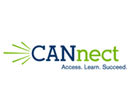
CANnect
A consortium that includes the Carroll Center for the Blind, the Washington State School for the Blind, and The Gabney Family Foundation, CANnet provides accessible online learning courses, educational resources, accessibility support, and professional development opportunities.
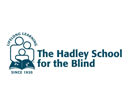
The Hadley School
Founded in 1920, The Hadley School provides free-of-charge distance education and online courses to individuals who are blind or visually disabled. Courses fall into four major categories: Adult Continuing Education, Family Education, High School, and Professional Studies.
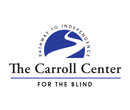
The Carroll Center for the Blind
Established nearly 80 years ago, The Carroll Center provides a range of services for individuals that are blind or low vision. Services include vocational training, vision rehabilitation, assistive technology training, educational support, and online learning courses.

Washington State School for the Blind
Serving the state of Washington, the Washington State School for the Blind offers educational services, including distance education courses, to individuals (birth to age 21) that have low vision or are blind.

Perkins School for the Blind
Through its school, Perkins provides educational services to 200 students at its on-campus location in Massachusetts. In addition, Perkins also focuses in four other areas: Perkins International (training and education services in 67 countries), Perkins Solutions (provides technology products and assistive consulting), Perkins Library (more than 530,000 items in braille, large print, and audio format), and Perkins eLearning (online portal that provides educational courses, professional development seminars and graduate level credits to educators through online learning).
INTERVIE
Wwith Chris Danielson, National Federation of the Blind
What are the biggest hurdles or challenges students with blindness or vision loss face in college, particularly in online learning environments?
The biggest barriers facing blind students are institutional attitudes about the proper way to treat students with disabilities and technical barriers in the technology that institutions use. Colleges and universities tend to handle the needs of each student with a disability individually, rather than recognizing that the technology they adopt can and should be accessible to all of their students.
The deployment of proper accessible technology would prevent, and perhaps eliminate, the need for individual accommodations. As to the technical barriers, most online learning environments and course management systems present accessibility barriers to blind students. Blind students access online courses, course management applications, and other computer applications using screen reader technology, which reads onscreen text aloud and/or sends it to a refreshable Braille display, an electronic device that uses electronically controlled pins to represent the dots that make up Braille letters, numbers, and symbols. In order for this technology to work properly, however, it must be designed and coded in a way that makes it screen reader-friendly. The simplest example of an accessibility barrier is using a graphic to represent something. Screen readers can read text but can't interpret graphics. Graphics that don't have a text label (or text, which is basically a text label that doesn't appear on screen but can be read by screen readers and similar software) are usually verbalized or displayed by screen readers as gibberish, if at all. Because of this and other accessibility barriers, including improperly labeled forms and alert messages that are not voiced by the screen reader, blind students often find that they can't access course materials, complete assignments, take quizzes and tests, or perform the other functions that may be handled by the online courseware.
What are colleges doing to make their online programs more accessible to students with visual disabilities?
Most colleges and universities do not have a systemic approach to making any part of the higher education experience–including online courses–accessible to blind students. Instead, they tend to approach the needs of blind students on an individual basis, usually through their offices for disabled student services. With the increased prevalence of technology throughout the educational experience and student life, however, this approach is no longer adequate, if it ever was. And it is particularly inadequate for online learning. Colleges and universities need to adopt clear policies, procedures, and guidelines to ensure that the technology they procure and deploy is fully accessible to all students with disabilities, including the blind. The National Federation of the Blind is working with partners in the area of higher education, including content providers, to craft a legislative proposal that would provide for the promulgation of voluntary guidelines that educational institutions could use to determine whether the technologies they intend to procure and deploy are accessible. We strongly believe that only this kind of nationwide, systemic approach to the problem has any real chance of making an equal education available to all blind students.
During the past couple of years, there has been movement on the legal front. How do you see things improving on the accessibility front? Do you anticipate the Department of Education firmly holding universities accountable?
The Department of Education and the Department of Justice have done important work in holding individual institutions and some content providers accountable for creating, procuring, and deploying inaccessible technology. In the context of online education, we were most recently pleased to see the agreement with EdX to make its platform for MOOCs accessible. However, as we have already said, piecemeal enforcement cannot be the ultimate solution to this nationwide problem, and that is why the National Federation of the Blind and others seek a legislative solution.
For the student with visual disabilities considering a college program, particularly an online program, do you have any tips or recommendations before they make a decision?
To the extent he or she can do so, a blind student should learn everything possible about the technologies and sources of content that are being used by his or her preferred institution and talk with its office for disabled students to learn about the institution's accommodation policies and procedures.
Is the NFB involved in student support at the college level (or via online learning)? If yes, what types of resources are available to students through or from the NFB?
The National Federation of the Blind does not provide direct services to students, but we are a resource for blind students. Our affiliate, the National Association of Blind Students, is a nationwide network of blind students who provide each other with information and support, both informally and through organized conferences. This organization also advocates on behalf of blind students. Where necessary, the National Federation of the Blind has supported students in litigation against institutions that are discriminating against them, including discrimination via the use of inaccessible technology, and we will continue to do so, at least until a more systemic solution to the problem is in place.
Additional Resources for Students & Families
There are hundreds of organizations that provide services, information, and support to college students with visual disabilities and their families. These organizations include government agencies, local community groups, social service agencies, foundations, and businesses. The list below identifies just a handful of the variety of resources available today.
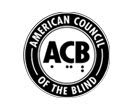
American Council of the Blind
A national, membership-based organization that was founded in 1961. The American Council of the Blind is committed to policy changes and improvements on both the state and national level supporting individuals with visual disabilities.
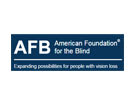
American Foundation for the Blind
Founded in 1921, the American Foundation for the Blind is a national nonprofit organization that advocates for individuals with vision loss. Through learning courses, family resources, and product evaluation, the AFB makes an impact across the country.
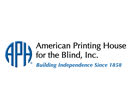
American Printing House for the Blind, Inc.
The American Printing House for the Blind is a nonprofit organization that creates and distributes educational and workplace publications for individuals who are blind or low vision.
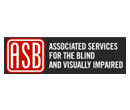
Associated Services for the Blind & Visually Impaired
Located in Philadelphia, the Associated Services for the Blind and Visually Impaired is a nonprofit organization dedicated to providing education and training services and support to individuals who low vision or are blind.

The Carroll Center for the Blind
Founded in 1936, The Carroll Center for the Blind offers vocational education, assistive technology training, online learning courses, and vision rehabilitation services to individuals who are blind or partially sighted.

The Chicago Lighthouse
Established in 1906, The Chicago Lighthouse is one of the nation's oldest social services agencies, one that focuses on providing services to individuals with visual disabilities. It offers a low vision clinic, school for children with disabilities, a legal clinic that assists those fighting discrimination, and a veteran's program to assist veterans across the country.
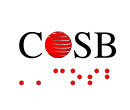
The Council of Schools for the Blind
A membership organization made up of special purpose schools that serve students with low vision or blindness. Offering specialized curriculum and campuses in nearly every state, COSB schools provides services ranging from professional development to Braille production, outreach programs to family training programs.
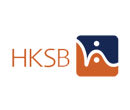
Helen Keller Services for the Blind
Provides an extensive selection of services and programs for individuals who have vision disabilities or are blind. Example services include rehabilitation, mobility training, employment services and job placement, low vision clinics, college preparatory programs, pre-vocational training, and a children's learning center.

The Hadley School
Offers various distance education and online courses to individuals who are blind or have visual disabilities. At no cost, students can take courses in high school, professional studies, family education, or adult continuing education.
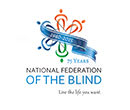
National Federation of the Blind
Founded in 1940, the National Federation of the Blind currently has more than 50,000 members. A grassroots organization, the NFB advocates on behalf of those who are blind or have visual disabilities. It also is actively involved in product and technology evaluation – serving as a leader in helping promote the adoption and use of emerging technologies for the blind.

National Association of Blind Students
Formed in 1967, the National Association of Blind Students is a division of the National Federation of the Blind. Offering student resources through state offices, the National Association of Blind Students connects students with visual disabilities and fosters opportunities for leadership positions within the organization.
Grants & Scholarships
College is a significant investment for all students. Typically, common forms of financial aid include student loans, grants, work-study, and scholarships. For individuals with visual disabilities, a range of scholarship options is available. Examples of such opportunities include:
Brother James Kearney Scholarship Program for the Blind
Offered from the Lavelle Fund for the Blind, the scholarship is designed for students attending one of 11 approved private colleges in New York State and Northeastern New Jersey. To be eligible, students must be a legal US resident, be legally blind or have a legal visual disability, financially needy according to the student's university, and attending an approved institution on a full-time basis.
AMOUNT Up to $15,000 per academic year, based on a need basis, for up to four years of study.
American Foundation for the Blind Scholarship Program
The American Foundation for the Blind (AFB) offers multiple scholarship programs. General requirements include an online application, an essay, official transcripts, two letters of recommendation, and proof of legal blindness. Below are six postsecondary scholarships the AFB administers for students that are legally blind:
- The Rudolph Dillman Memorial Scholarship
Four scholarships for full-time students, both undergraduate and graduate, studying either in the field of rehabilitation or for the education of individuals with visual disabilities or blindness.
AMOUNT $2,500 - The Delta Gamma Foundation Florence Margaret Harvey Memorial Scholarship.
One scholarship for either an undergraduate or graduate student studying full-time in the field of rehabilitation or for an individual's education who is blind or low vision.
AMOUNT $1,000 - The R.L. Gillette Scholarship
Two scholarships for women studying full-time in an undergraduate program in music or literature. In addition to general requirements, candidates must also submit a creative writing sample or musical performance on CD.
AMOUNT $1,000 - The Paul and Ellen Ruckes Scholarship
Two scholarships for students enrolled in full-time undergraduate or graduate studies in the computer, life, or physical sciences, or in the field of engineering.
AMOUNT $2,000 - The Karen D. Carsel Memorial Scholarship
One scholarship for a full-time graduate student studying in any field.
AMOUNT $500 - The Gladys C. Anderson Memorial Scholarship
One scholarship to a female undergraduate or graduate student studying religious or classical music. Candidates must also submit a musical performance on CD in addition to general application documents.
AMOUNT $1,000
American Council of the Blind Scholarship Program
Each year, the American Council of the Blind awards approximately 20 scholarships to undergraduate and graduate college students that are legally blind. Students must meet minimum GPA requirement and be active participants in their local/school community.
AMOUNT Between $1,000 and $2,500
Kenneth Jernigan Scholarship
Sponsored by the American Action Fund for Blind Children and Adults, the Kenneth Jernigan Scholarship is awarded to a legally blind student annually. Applications are open from November 1 to March 31 of the next year.
AMOUNT $12,000
Blinded Veterans Association Scholarship Program
The Blended Veterans Association (BVA) offers seven scholarships through two programs: Thomas H. Miller Scholarship Program and the Kathern F. Gruber Scholarship Program. Eligible students included dependent children, spouses and grandchildren of blinded veterans (including Active Duty blinded service members). Candidates must be accepted or enrolled in as a full-time student at an accredited college, business, vocational, or secretarial school.
Thomas H. Miller Scholarship. One Scholarship Of $1,000 Awarded
Kathern F. Gruber Scholarship. Six Scholarships Awarded At $2,000 Each
Chicago Lighthouse Scholarship Program
Started in 2004, the Chicago Lighthouse Scholarship Program is designed for students with visual or multi-disabilities. Scholarships may be applied to tuition, books and learning materials, technology, housing, and transportation.
AMOUNT Varies, individual scholarships range from $1,000 to $5,000
Dale M. Schoettler Scholarship
For low vision or blind students at California State University-Northridge, the Dale M. Schoettler Scholarship requires applicants to be enrolled in at least six units of study and meet minimum GPA requirements.
AMOUNT $8,500
The Arthur E. and Helen Copeland Scholarships
Awarded annually to one female and one male student. Candidates must be current members of the United States Association of Blind Athletes (USABA) who are legally blind and are enrolled full-time at a two- or four-year, or technical institution or university.
AMOUNT $500/each
Christian Record Services for the Blind Scholarships
Offers partial scholarships to legally blind individuals to pursue a college degree. Applicants must be legally blind and planning to attend college as a full-time undergraduate student.
AMOUNT Varies
The Lighthouse Bound Scholarship
Up to 20 scholarships for high school seniors are granted to legally blind students planning to attend college full-time and one scholarship for a student planning to attend graduate school. Candidates do not need to demonstrate financial need and scholarships are granted on a one-time basis.
AMOUNT $10,000 per scholarship
The Fred Scheigert Scholarship Program
Three scholarships granted through a competitive selection process and is open to full-time college students who meet low vision guidelines and academic qualifications.
AMOUNT $3,000 per scholarship
Latest Posts
Best Master's in Data Analytics Programs: What You Need to Know
Top Online MBAs in Business Analytics
Explore the top online MBAs in business analytics, including tuition costs, curricular offerings, and more with this student research resource.
Scholarships and Financial Aid in Texas
Financial aid makes college a reality for many students. Learn about the top scholarships in Texas and how you can earn one.
AffordableCollegesOnline.org is an advertising-supported site. Featured or trusted partner programs and all school search, finder, or match results are for schools that compensate us. This compensation does not influence our school rankings, resource guides, or other editorially-independent information published on this site.
Do this for you
Explore your possibilities- find schools with programs you’re interested in and clear a path for your future.